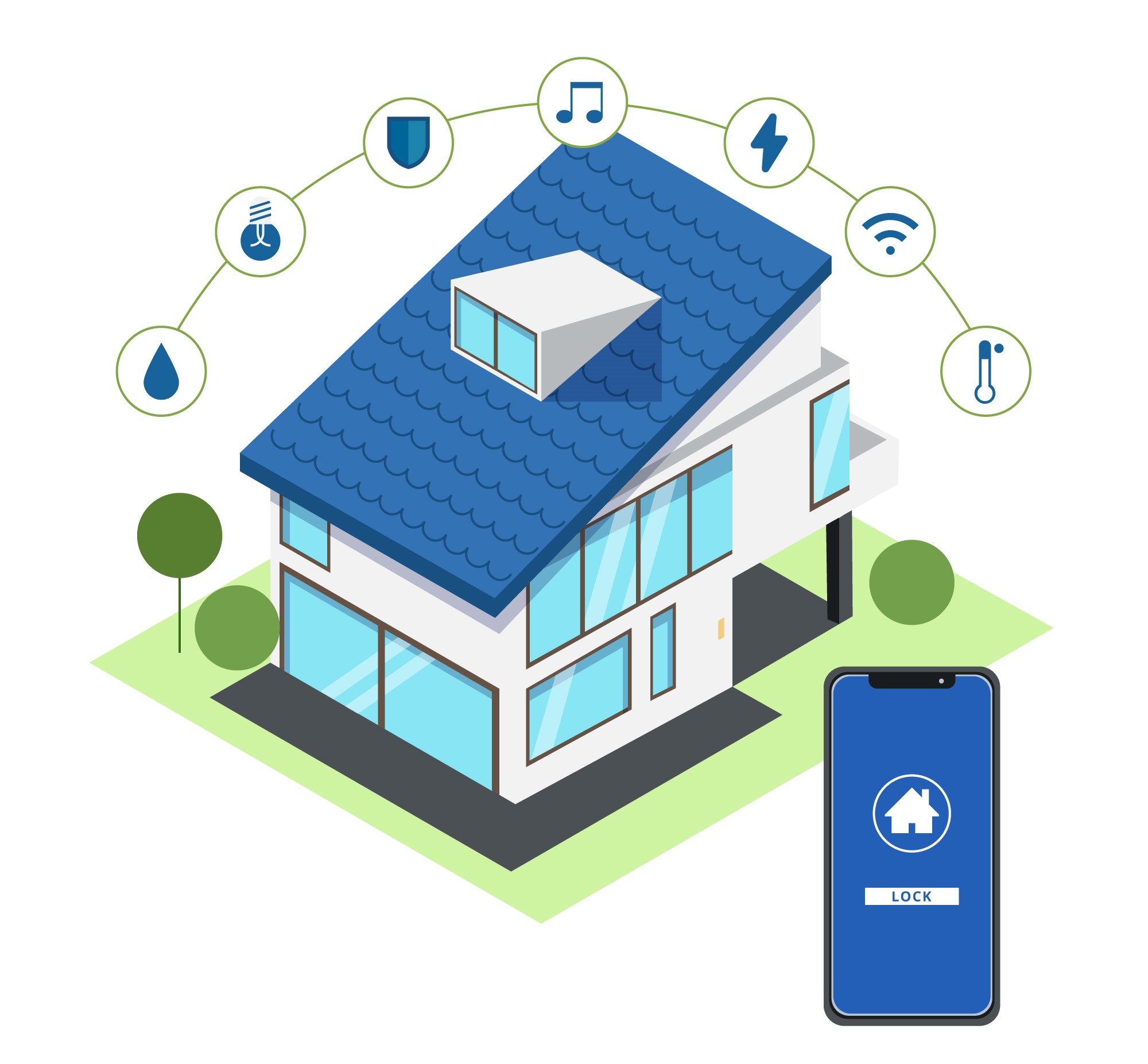In today’s rapidly evolving technological landscape, the integration of Building Management Systems (BMS) with Smart Home Technology is reshaping how we manage and interact with our living and working environments. Combining these two technologies enables increased control, convenience, and efficiency as buildings grow smarter and more networked. The advantages, difficulties, and best practices for fusing building management systems and smart home technology are examined in this blog.
Understanding the Basics
1. What Are Building Management Systems (BMS)?
Building Management Systems are centralized systems that monitor and control various aspects of a building’s operations, such as heating, ventilation, air conditioning (HVAC), lighting, security, and energy management. BMS provides a comprehensive view of building performance and helps in optimizing operational efficiency.
2. What Is Smart Home Technology?
Smart Home Technology refers to devices and systems that allow for remote and automated control of home systems and appliances. Voice-activated assistants, security cameras, lighting, and thermostats are examples of this. The purpose of these technologies is to improve energy efficiency, comfort, and security in home environments.
Benefits of Integration
1. Enhanced Efficiency and Energy Savings
Integrating BMS with smart home technology allows for advanced automation and data-driven decisions, leading to significant energy savings. For example, smart thermostats and building management systems (BMS) can collaborate to optimize energy use by adjusting temperatures in response to occupancy patterns, weather, and real-time data.
2. Improved Comfort and Convenience
Smart home technology offers personalized control over various building systems, which improves ease and comfort. Integration with BMS ensures a seamless experience by reflecting changes made with smart home devices in the building’s overall management.
– Example: Users can control lighting, temperature, and security systems via their smartphones or voice commands, with settings synchronized with the BMS for consistent control across the building.
3. Advanced Data Analytics and Insights
Integrating these systems allows for sophisticated data collection and analysis. BMS can gather data from smart home devices to provide actionable insights into building performance, usage patterns, and system efficiency.
– Example: Data from smart lighting systems can be analyzed to determine the most efficient lighting schedules and settings, contributing to better overall building management.
4. Enhanced Security and Safety
Smart home technology can enhance building security by integrating with BMS to provide comprehensive security solutions. This includes real-time monitoring, automated alerts, and remote control of security systems.
– Example: Smart security cameras and sensors integrated with BMS can trigger alarms and send notifications in case of unusual activity, ensuring timely responses to potential security threats.
Challenges and Considerations
1. Compatibility and Standardization
One of the primary challenges in integrating BMS with smart home technology is ensuring compatibility between different systems and devices. Standardization across technologies and protocols is crucial for seamless integration.
2. Data Security and Privacy
With increased connectivity comes the need for robust data security measures. Ensuring that integrated systems are secure from cyber threats and unauthorized access is essential.
– Solution: Implement strong encryption, access controls, and regular security updates to protect sensitive data and maintain the integrity of the integrated system.
3. Complexity of Integration
Integrating BMS with smart home technology can be complex and may require specialized expertise. Proper planning and coordination are essential to avoid potential issues during implementation.
– Solution: Work with experienced professionals who specialize in building automation and smart home integration to ensure a smooth and successful implementation.
4. Cost Implications
The initial investment for integrating these systems can be significant, and businesses must weigh the long-term benefits against the upfront costs.
– Solution: Conduct a thorough cost-benefit analysis to determine the potential return on investment and consider phased implementation to manage costs effectively.
Best Practices for Successful Integration
1. Define Clear Objectives
Before starting the integration process, define clear objectives and desired outcomes. This will help guide the selection of technologies and ensure that the integration aligns with your goals.
2. Choose the Right Technology Partners
Partner with technology providers and consultants who have expertise in both BMS and smart home technology. Their experience will be invaluable in ensuring successful integration and addressing any issues that arise.
3. Plan for Scalability
Make sure your integration solution is scalable when designing it. Make sure the solutions you select can grow or be upgraded in line with your changing needs and the state of technology.
4. Focus on User Experience
Prioritize user experience in the integration process. Make sure the integrated system is simple to use and intuitive so that residents can easily interact with and operate it.
Winding Up
Integrating Building Management Systems with Smart Home Technology represents a significant advancement in how we manage and interact with our environments. By enhancing efficiency, comfort, and security, this integration offers numerous benefits for both residential and commercial properties. However, careful planning, consideration of challenges, and adherence to best practices are essential for successful implementation.
As smart technology continues to evolve, the potential for integration will only grow, offering even greater opportunities for improving building management and enhancing occupant experiences. Embrace the future of intelligent spaces and explore the possibilities of integrating BMS with smart home technology today.
Comments are closed.

